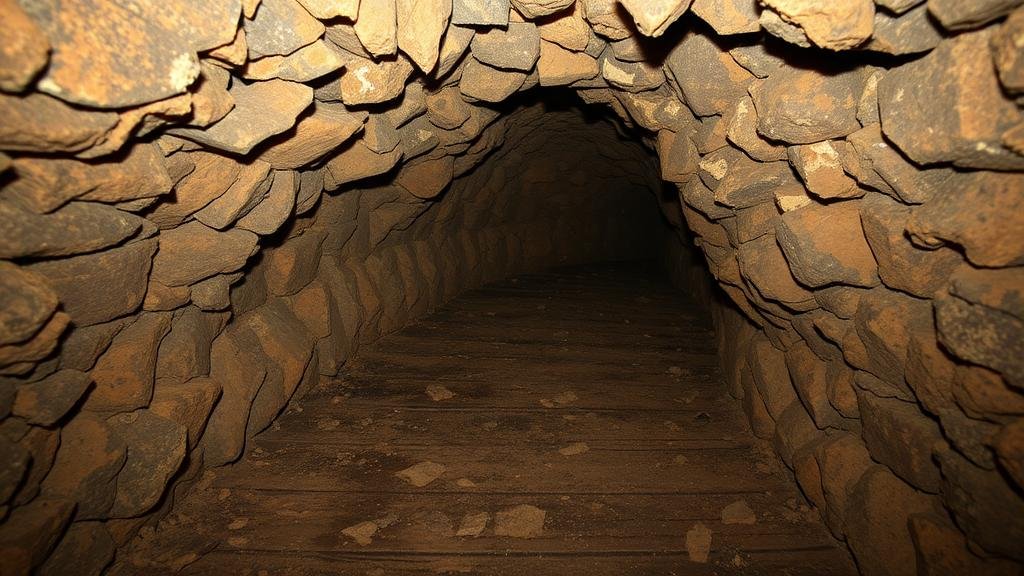Following paths of ancient miners to unearth forgotten treasures deep underground.
Following Paths of Ancient Miners to Unearth Forgotten Treasures Deep Underground
The allure of ancient mining sites offers adventurers and historians alike an opportunity to explore the remnants of human ingenuity. From the vast caverns of the Roman Empire to the intricate tunnels of the Aztecs, these sites hold not only the promise of precious metals and gemstones but also lessons about the past. This article delves into the paths forged by ancient miners and the treasures that can still be discovered today.
A Historical Overview of Ancient Mining
Mining has been an integral part of human civilization for millennia. earliest evidence of mining dates back to around 4500 BC in what is now Turkey, where flint was quarried for tools. By 3000 BC, the Egyptians were mining for gold in the Nile riverbed, while in the Americas, the Inca civilization flourished, extracting rich deposits of silver from the Andes mountains.
Ancient miners employed a variety of techniques to extract minerals, including:
- Surface mining: This technique involves removing soil and rock layers to access minerals near the surface.
- Underground mining: Used for deeper deposits, this method includes creating tunnels and shafts to extract ores.
- Panning and placer mining: Often used in riverbeds, this method separates valuable minerals from sediment.
Significant Locations of Ancient Mining
Throughout history, certain regions have gained prominence due to their rich geological deposits. Below are key ancient mining locations:
- PotosÃ, Bolivia: Established in 1545, the Cerro Rico mountain became one of the worlds richest silver mines, feeding the Spanish Empires wealth for centuries.
- Las Médulas, Spain: A Roman gold mining site, where hydraulic mining techniques were utilized to extract gold from the earth, leaving behind stunning landscapes.
- The Great Orme, Wales: This site features extensive copper mines dating back to the Bronze Age, showcasing advanced mining techniques of ancient Britons.
Technological Innovations of Ancient Miners
Ancient miners developed various innovative techniques to facilitate more efficient mining operations. For example, the Romans mastered the use of water-powered machinery and created sophisticated drainage systems to prevent flooding in their mines. Also, they utilized tools made from bronze and iron, enhancing their ability to extract harder ores.
In Mesoamerica, the Maya employed terracing systems and intricate metallurgy to produce excellent copper, gold, and silver artifacts. These advancements not only increased their outputs but contributed to advancements in culture and commerce.
Unearthing Forgotten Treasures Today
Modern explorers are increasingly drawn to ancient mining sites, driven by the allure of forgotten treasures. Archaeological efforts have unveiled remarkable findings, such as:
- Gold artifacts in the Sierra Nevada mountains, where miners might have left gold ingots and jewelry behind as they abandoned their workings.
- Roman pottery and tools in the remnants of Las Médulas, giving insight into the scale of their mining operations.
These discoveries are often supported by advanced technologies, such as ground-penetrating radar, which allows archaeologists to map out ancient structures without disturbing the ground.
Challenges and Considerations in Ancient Mining Exploration
Exploring ancient mining sites isnt without its challenges. Potential hazards include:
- Environmental degradation: Disturbing these historical sites can lead to significant ecological impacts.
- Legal restrictions: Many ancient mines are protected by heritage laws, requiring permits and proper procedures for exploration.
- Safety risks: Abandoned mines can be unstable and dangerous, posing risks for untrained explorers.
So, it is essential to approach these sites with respect for their historical significance and adherence to safety protocols.
Conclusion: The Call of the Ancients
Following the paths of ancient miners offers a unique blend of adventure and learning. As we uncover their hidden treasures, we gain invaluable insights into human history and technological evolution. Whether youre an archaeologist, a historian, or a casual explorer, the underground world of ancient miners beckons with stories waiting to be told.
For those interested in pursuing this path, consider these actionable takeaways:
- Research local ancient mining sites: Familiarize yourself with the regulations and history related to the area.
- Join archaeological groups or guided tours: This can enhance safety and provide deeper insights into the cultural significance of the sites.
- Document your findings: Share your experiences with the community, contributing to a greater understanding of our shared history.



